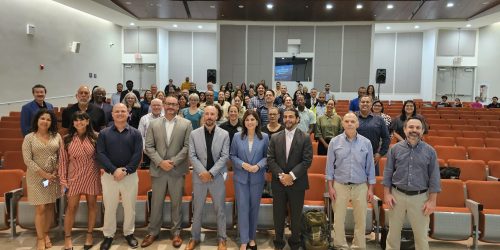When Hurricane Sandy flooded portions of the Manhattan subway system, it highlighted the great vulnerability of New York City to storm surge and coastal flooding. Since then, the U.S. Army Corps of Engineers (USACE) launched a study considering gated storm surge barriers as a solution for the entire metropolitan area. A research team funded by the NOAA National Estuarine Research Reserve Science (NERRS) Collaborative, the New York State Energy Research and Development Authority (NYSERDA), and the Consortium for Climate Risk in the Urban Northeast (CCRUN), a CPO RISA Team, explored the Army Corps’ strategy, finding it an imperfect solution.
The great challenge in designing such ambitious infrastructure is climate change-driven sea level rise. If sea level rises slowly, the barrier will function for over 200 years. If the pace of sea level rise accelerates, the closed barrier may trap river water and lead to flooding upstream by 2040. The Army Corps proposes to contend with this challenge by raising the “trigger” water level for closing the barrier along with sea level rise.
The research team used historical data on storm tides and adjusted water levels for sea level rise scenarios to calculate how often the gate would need to be closed in potential future events. Gate closures are impactful decisions that strongly influence the health of estuaries inside the boundary of the gate. While the USACE strategy of adjusting closures would buy some time, the approach may require other waterfront seawalls to be raised at a high and ongoing additional future expense. Increasing the height of the storm surge barrier early could save money otherwise spent on fortifying waterfronts on a neighborhood-by-neighborhood basis. Other strategies may need to be considered.
The study was published in the Journal of Marine Science and Engineering and is an example of CCRUN’s coastal research portfolio. Authors included investigators that have been supported by CPO’s RISA (Chen and Orton) and Climate Observations and Monitoring (Wahl) programs.









